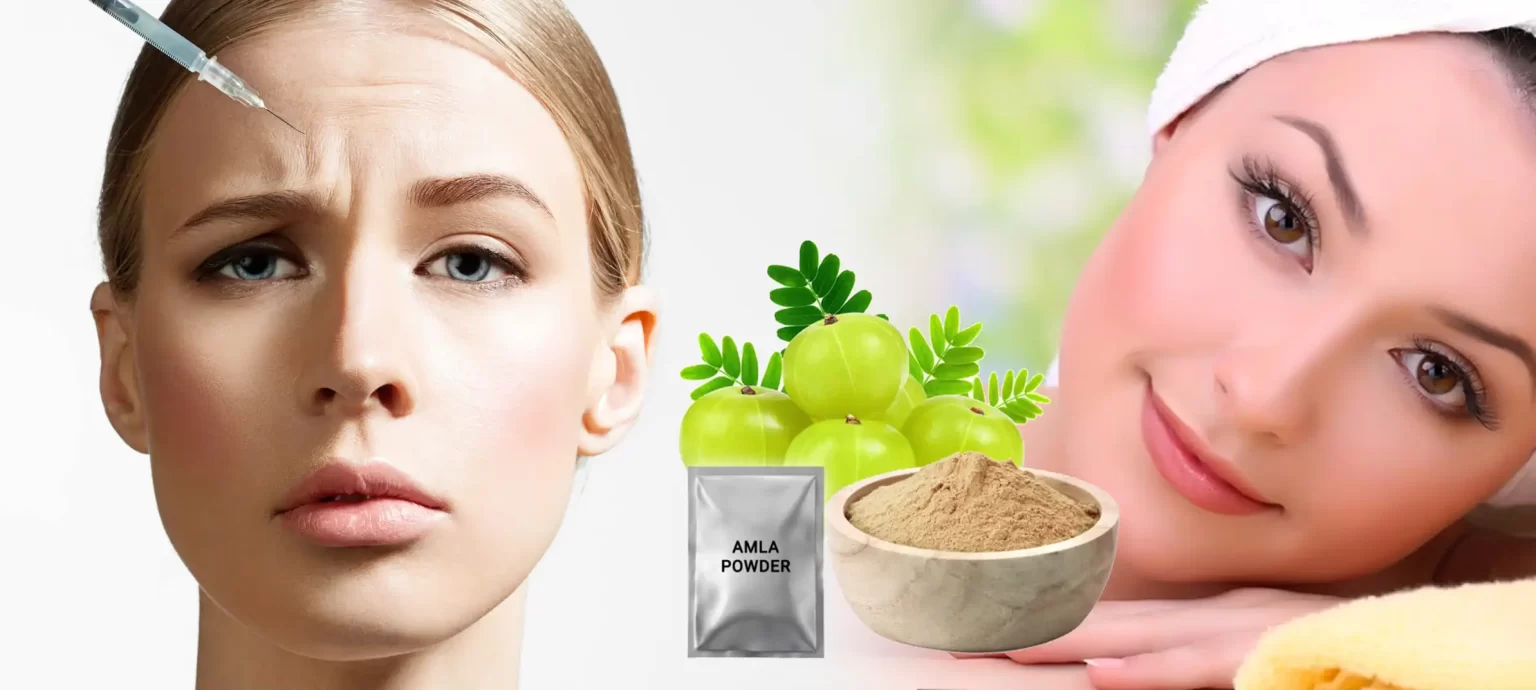Aging is a natural process that affects every layer of the skin, but one of the most significant impacts is on collagen—the protein that gives skin its firmness and elasticity. As we age, collagen production decreases, leading to the formation of wrinkles and sagging skin. This decline in collagen is influenced by various factors including genetics, environmental exposure (like UV rays), and lifestyle choices (such as smoking and diet).
The Role of Collagen in Skin Health
Collagen is the most abundant protein in our body, providing structure and strength to not only the skin but also bones, muscles, and tendons. In the skin, collagen resides in the dermis (the middle layer) and works alongside elastin to provide skin with its texture and shape. As collagen degrades over time, the skin loses its youthful fullness, leading to the common signs of aging such as fine lines, wrinkles, and loose skin.
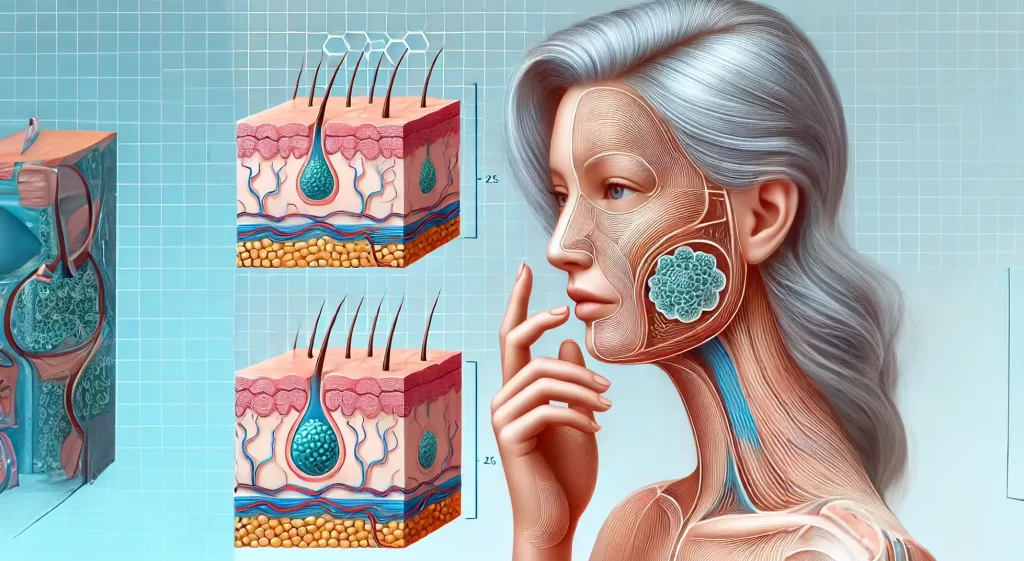
Common Anti-Aging Treatments
To combat these signs of aging, several treatments have been developed, with Botox injections being among the most popular and effective. Botox, a purified form of botulinum toxin, works by temporarily paralyzing muscles, which can prevent the deepening of wrinkles during facial expressions. It’s most commonly used around the forehead, eyes, and mouth—areas where expression lines tend to appear.
In addition to Botox, other treatments such as filler injections, laser therapies, and topical treatments that aim to boost collagen production are also widely used. Each treatment comes with its own set of benefits and considerations, making it important for individuals to choose based on their specific skin needs and health
What are Botox Injections?
Botox injections are one of the most popular cosmetic treatments for reducing the appearance of wrinkles and fine lines. Derived from botulinum toxin, Botox temporarily paralyzes muscle activity, which can help smooth out skin and prevent new wrinkles from forming.
How Botox Works
Botox works by blocking the nerve signals to the muscles where it is injected. When these nerve signals are interrupted, the affected muscle is temporarily paralyzed or weakened. Without movement of these muscles in the face, certain wrinkles may soften, decrease, or even disappear. The procedure is most commonly applied to the forehead lines, crow’s feet (lines around the eye), and frown lines.
Uses of Botox
While Botox is widely known for its cosmetic uses, it is also approved for treating several medical conditions, including:
- Chronic migraine
- Excessive sweating (hyperhidrosis)
- Muscle disorders such as spasms and stiffness
- Certain bladder disorders
In the cosmetic world, Botox is primarily used to reduce the visible signs of aging by smoothing facial wrinkles.
Potential Side Effects and Considerations
Like any medical treatment, Botox injections can have side effects. Common minor side effects include pain, swelling, or bruising at the injection site. Less commonly, Botox may cause more significant issues such as problems with muscle control, vision problems, or signs of an allergic reaction, which include itching, rash, redness, or swelling.
Important Considerations
Before opting for Botox treatments, it’s important to consult with a qualified healthcare provider to discuss potential risks and benefits based on your specific health conditions and aesthetic goals. A thorough understanding of the procedure and realistic expectations are crucial to achieving satisfactory results.conditions.
The Role of Collagen in Skin Health
Collagen is a key protein in the body, providing structure and strength to various tissues, particularly the skin. It plays a critical role in maintaining skin elasticity and youthfulness, acting as one of the main building blocks for skin, bones, hair, muscles, tendons, and ligaments.
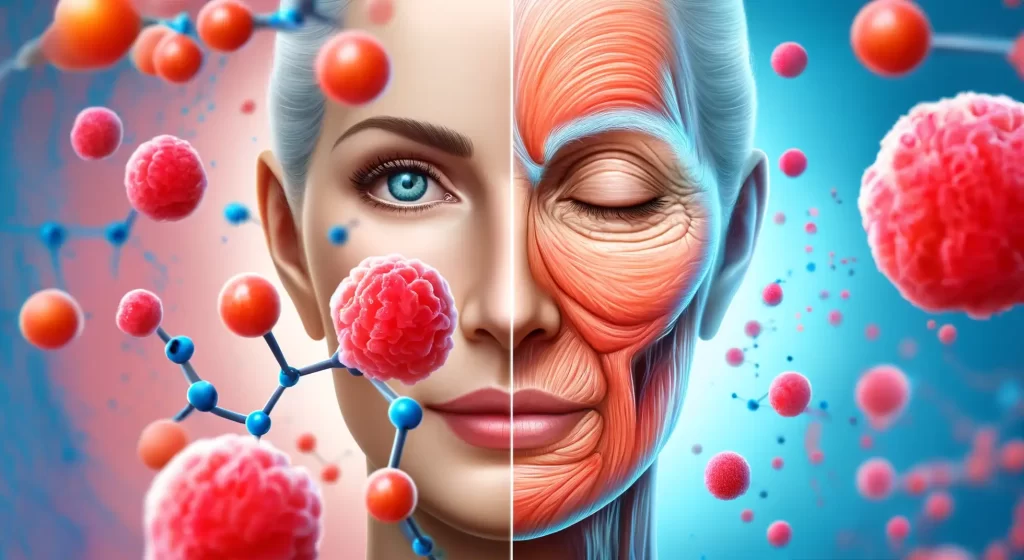
Importance of Collagen for Skin
Collagen helps to keep the skin resilient and hydrated, and it’s responsible for the smooth, plump appearance of young, healthy skin. As we age, our bodies produce less collagen, which results in the common signs of aging such as wrinkles, sagging skin, and a loss of skin elasticity and moisture.
Factors Contributing to Collagen Degradation
Several factors accelerate the degradation of collagen in the skin over time:
- Aging: Natural aging is the primary reason for collagen reduction in the skin. As you age, collagen production slows down and the existing collagen can become fragmented and ineffective.
- Sun Exposure: UV radiation from sun exposure can break down collagen at a faster rate than normal aging. It does this by penetrating the middle layer of skin (dermis), causing the abnormal build-up of elastin, which when broken down results in the production of enzymes that can degrade collagen and elastic fibers.
- Smoking: Smoking reduces collagen production and impairs wound healing. It affects the blood vessels, causing them to constrict, which reduces the oxygen and nutrients that can reach the skin to maintain healthy collagen levels.
- Pollution and Environmental Factors: Exposure to pollution, environmental toxins, and even repeated exposure to harsh winds can damage the skin and degrade collagen.
- Dietary Choices: A diet high in sugar, excessive alcohol, and certain processed foods can negatively impact collagen levels. Sugar, for instance, can cause inflammation and lead to a process known as glycation, where sugar molecules attach to and stiffen collagen fibers.
- Lack of Sleep and Stress: Chronic stress and lack of sleep can lead to increased cortisol levels which may degrade collagen over time.
The importance of collagen for maintaining a youthful appearance is undeniable. By understanding the factors that contribute to its degradation, individuals can take proactive steps to protect and boost their body’s natural collagen production through lifestyle choices, dietary changes, and skincare practices.
Natural Alternatives to Botox
In the quest for youthful skin, many are turning away from invasive procedures like Botox and seeking natural alternatives that can help achieve similar effects. These natural solutions focus on enhancing the body’s collagen production and improving skin elasticity without the use of needles or toxins.
Introduction to Natural Substances Mimicking Botox
Several natural substances have been found to mimic the effects of Botox by either relaxing facial muscles or replenishing skin nutrients to reduce the appearance of wrinkles. Unlike Botox, which paralyzes the muscle to prevent wrinkles, these natural products tend to work by nourishing the skin and promoting a healthier structure.
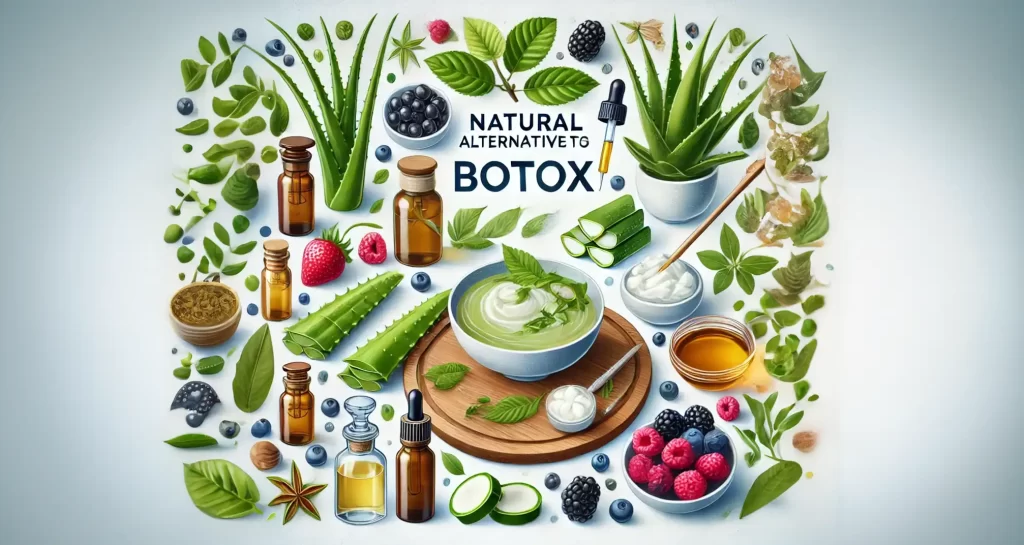
Key Natural Ingredients for Collagen Production
- Aloe Vera: Known for its healing and soothing properties, aloe vera can increase collagen production and hydrate the skin, which helps reduce the appearance of fine lines.
- Vitamin C: This essential nutrient is not only a powerful antioxidant but also a critical factor in collagen synthesis. Vitamin C serums or natural sources like citrus fruits can help protect the skin from UV damage and improve skin texture.
- Coenzyme Q10 (CoQ10): This antioxidant helps neutralize harmful free radicals and supports cellular energy production, which is vital for maintaining skin health and elasticity.
- Green Tea: Rich in antioxidants called catechins, green tea helps protect the skin from environmental damage while promoting healthier skin due to its anti-inflammatory properties.
- Grape Seed Extract: Packed with antioxidants, including proanthocyanidins, grape seed extract helps improve skin’s elasticity and softness by bonding with collagen, thereby protecting the skin from premature aging.
- Hyaluronic Acid: Although not a direct stimulant for collagen production, hyaluronic acid enhances skin moisture and reduces the appearance of wrinkles by plumping the skin.
Incorporating Natural Ingredients into Your Routine
To achieve the best results from these natural alternatives, incorporate them into your daily skincare routine. Applying topical treatments that contain these ingredients or consuming foods rich in antioxidants and vitamins can significantly impact your skin’s appearance and health.
These natural alternatives offer a gentler approach to skin care, focusing on long-term rejuvenation and health rather than immediate but temporary effects. For those looking to avoid the side effects and synthetic nature of Botox, these natural solutions can be a valuable part of a comprehensive anti-aging skincare regimen.
Spotlight on Amla (Indian Gooseberry)
Amla, also known as Indian Gooseberry, is a powerhouse of nutrients and has been revered in Ayurvedic medicine for its health-promoting properties. Particularly for skin health, Amla offers a multitude of benefits due to its high antioxidant properties and exceptional Vitamin C content.
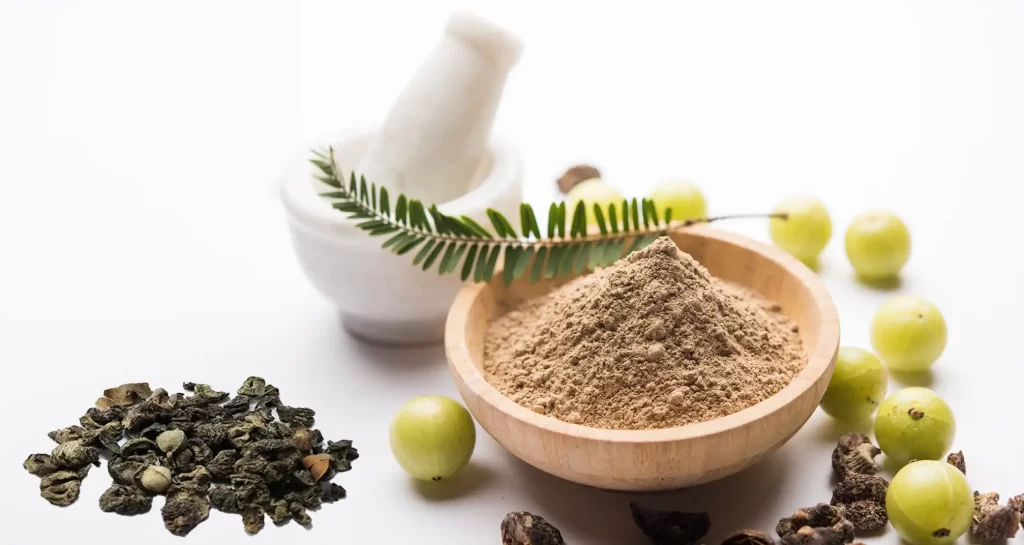
Benefits of Amla for Skin Health
Antioxidant Properties: Amla is one of the richest sources of antioxidants. Antioxidants help protect the skin by combating free radicals, the unstable molecules that contribute to aging and disease. By neutralizing these radicals, Amla helps in reducing skin damage that leads to premature aging.
High Vitamin C Content: Vitamin C is crucial for the synthesis of hyaluronic acid and collagen, which are vital for maintaining the skin’s elasticity and firmness. Amla’s high Vitamin C content not only aids in the natural regeneration of collagen but also helps in brightening the skin and fading pigmentation.
How Amla Promotes Collagen Production and Improves Skin Appearance
Stimulating Collagen Production: The ample Vitamin C in Amla ensures the proper formation of collagen, which helps keep the skin looking plump and youthful. This vitamin is essential for linking the amino acids that form collagen, thus maintaining the skin’s structural integrity and elasticity.
Improving Skin Texture and Tone: Regular consumption or topical application of Amla can improve the skin’s texture and appearance. It helps in hydrating the skin, reducing the visibility of fine lines, and making the skin more supple.
Skin Repair and Renewal: Amla facilitates faster healing of the skin due to its rich profile of nutrients. This property is especially beneficial for reducing acne scars and marks, promoting an even skin tone and smoother complexion.
Incorporating Amla into your skincare routine or diet can significantly enhance your skin’s health from the inside out. Whether used as part of a face mask, ingested as a supplement, or simply included in your daily diet, Amla can provide a natural boost to your skin care regimen, making it an excellent natural alternative to cosmetic treatments like Botox.
Comparing Botox and Amla: Effectiveness, Safety, Cost, and Accessibility
When considering skin rejuvenation and anti-aging treatments, both Botox and Amla present compelling benefits. Here’s a detailed comparative analysis focusing on their effectiveness, safety, cost, and accessibility:
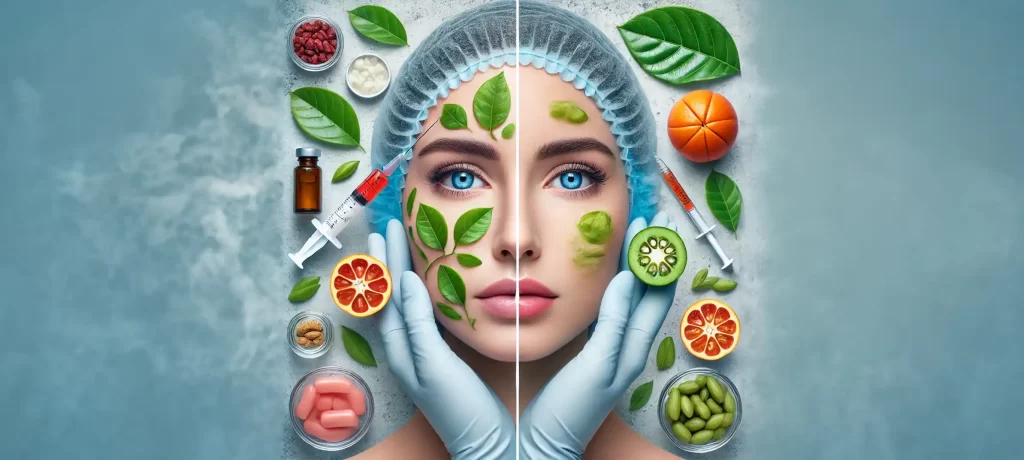
Effectiveness
- Botox: Botox injections are highly effective for reducing the appearance of wrinkles and fine lines, particularly around the eyes and forehead. The results are typically visible within a few days and can last for several months.
- Amla: Amla, while more subtle and gradual in its effect, helps improve skin elasticity and texture through its high Vitamin C content which boosts collagen production. It’s more of a long-term skincare solution rather than an immediate fix.
Safety
- Botox: Generally safe when administered by a qualified professional, Botox can have side effects such as bruising, pain at the injection site, and in rare cases, can lead to muscle weakness or drooping features.
- Amla: Being a natural fruit, Amla is safe for most people when used as part of a diet or skincare routine. However, its effects are gentler and cumulative, and it’s free from the risks associated with injections.
Cost
- Botox: Botox is considered a high-cost treatment. Each session can be expensive, and multiple sessions may be needed to maintain the desired effect.
- Amla: Amla is significantly more affordable and can be incorporated into diets or beauty routines at a minimal cost. It offers a cost-effective method for maintaining skin health over the long term.
Accessibility
- Botox: Requires visits to cosmetic clinics or medical professionals trained in its administration. Not everyone has easy access to these services, especially in less urban areas.
- Amla: Widely available in various forms such as fresh fruit, powder, and supplements. Amla can be easily obtained from health stores, online retailers, or supermarkets.
Conclusion
Choosing between Botox and Amla depends on individual needs, expectations, and preferences. For those seeking immediate results and are willing to invest in regular treatments, Botox offers a proven solution. However, for individuals looking for a natural, safer, and more affordable way to support skin health over time, Amla provides a valuable alternative.
DIY Amla Skin Tonic for Anti-Aging
The recipe you mentioned uses Amla for its incredible antioxidant properties and high Vitamin C content, essential for collagen production and skin rejuvenation. Here’s how to prepare and use this Amla tonic at home:
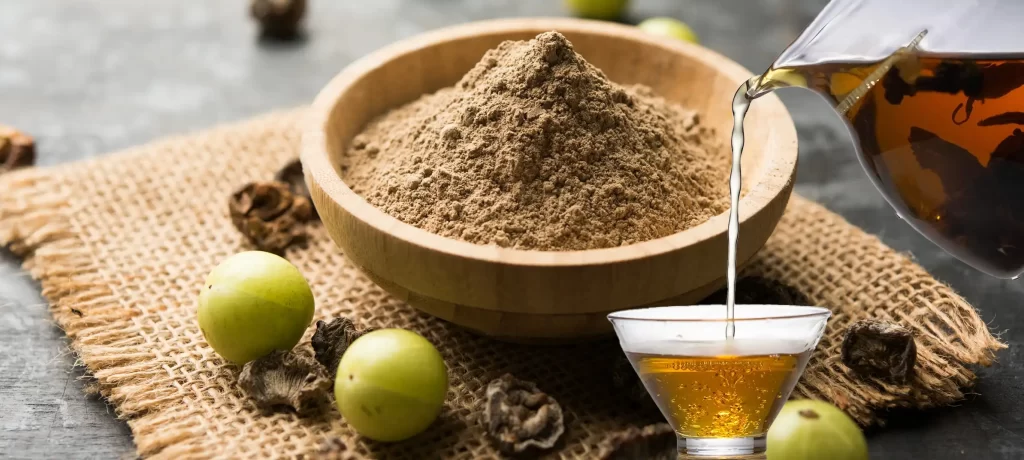
Ingredients:
- 1 tablespoon of Amla powder or dried Amla peels
- 1 cup of boiling water
Preparation:
- Amla Infusion:
- Place the Amla powder or dried peels in a heat-resistant bowl.
- Pour one cup of boiling water over the Amla.
- Cover and let it steep until it cools down to room temperature.
- Straining:
- Strain the mixture to remove the solid parts, retaining the infused water.
Application:
- Facial Tonic:
- Once the Amla infusion has cooled, use a cotton ball to apply it to your face and neck.
- Gently massage it into the skin, focusing on areas prone to wrinkles and sagging.
- Leave it on the skin for about 15 minutes to allow the nutrients to penetrate deeply.
- Scalp Treatment:
- You can also apply this Amla tonic to the scalp to strengthen hair follicles and improve hair vitality.
- Massage it into the scalp and leave it for about 10 minutes before rinsing or leave it overnight for deep nourishment.
Frequency:
- Apply this Amla tonic to your skin and scalp one to two times daily, in the morning and/or evening. Consistent use will yield the best results, typically noticeable within one to two weeks.
This Amla tonic leverages the natural efficacy of Amla to enhance skin and hair health, acting as a natural and effective alternative to cosmetic treatments. It’s a simple yet powerful remedy that supports skin collagen and adds vitality and shine to the hair.
Lifestyle Tips for Natural Skin Rejuvenation
Achieving youthful and healthy skin naturally involves more than just topical treatments; it requires comprehensive lifestyle changes. Here’s how you can support collagen production and enhance your skin’s appearance through diet, hydration, and smart lifestyle choices.
Diet: Fuel for Your Skin
A nutrient-rich diet is fundamental for boosting collagen production and, subsequently, rejuvenating the skin. Focus on including:
- Antioxidant-rich foods: Berries, nuts, green leafy vegetables, and brightly colored fruits help combat free radicals that can break down collagen fibers.
- Vitamin C-rich foods: Citrus fruits, strawberries, bell peppers, and broccoli aid in collagen synthesis.
- Protein-rich foods: Lean meats, fish, tofu, beans, and legumes provide amino acids necessary for collagen production.
Hydration: The Cornerstone of Skin Health
Proper hydration is crucial for maintaining skin elasticity and plumpness. Drinking sufficient water throughout the day helps keep the skin hydrated from the inside out, reducing the appearance of fine lines and wrinkles. Aim for at least 8 glasses of water daily, and consider incorporating hydrating foods like cucumbers and watermelon into your diet.
Lifestyle Changes: Protect and Enhance
- Sun Protection: Excessive sun exposure can accelerate collagen breakdown, leading to premature aging. Protect your skin by wearing sunscreen with at least SPF 30, seeking shade during peak sun hours, and wearing protective clothing such as wide-brimmed hats and long sleeves.
- Avoid Smoking: Smoking impairs blood flow to the skin, significantly decreasing collagen production and resulting in early wrinkles. Quitting smoking can dramatically improve your skin’s health and appearance.
- Regular Exercise: Exercise increases blood circulation, which helps nourish skin cells and keep them vital. Blood carries oxygen and nutrients to working cells throughout the body, including the skin, which can help promote collagen production and new skin cell growth.
Incorporating these dietary and lifestyle changes can significantly enhance your skin’s health naturally, reducing the need for invasive procedures like Botox. By adopting a holistic approach to skin care, you support not only your skin’s youthful appearance but also your overall well-being.
Conclusion: Embracing Both Modern and Traditional Approaches to Skin Health
Throughout this discussion on Botox injections and natural remedies like Amla, we’ve explored various aspects of skin health management, from the fast-acting benefits of modern treatments to the holistic advantages of traditional methods.
Key Takeaways:
- Botox Injections: Effective for immediate reduction of wrinkles and fine lines, offering targeted and temporary solutions.
- Natural Remedies: Provide a gentler, longer-term approach that supports overall skin health and collagen production with minimal side effects.
- Collagen’s Role: Central to maintaining skin elasticity and youthfulness, with both Botox and natural remedies playing a role in its management.
- Expert Insights and Research: Highlight the effectiveness of both approaches and suggest a tailored blend depending on individual skin needs and health objectives.
A Balanced Approach to Skin Care:
The decision to use Botox or natural remedies should be informed by personal health, skin condition, lifestyle, and desired outcomes. It’s beneficial to consult with dermatologists and skincare professionals to understand the best practices for your specific circumstances. Often, a combination of both modern and traditional methods yields the best results, leveraging the quick efficacy of treatments like Botox and the sustainable, skin-nourishing benefits of natural remedies.
We encourage readers to consider all aspects of skin care—embracing innovations in dermatology while also appreciating and utilizing the wealth of natural resources available for skin health. By understanding and respecting both modern and traditional methods, you can create a personalized skincare routine that supports lasting youthfulness and health.
Ressources
- Botox Official Website: Provides detailed information about the procedure, benefits, and considerations for Botox treatments. Visit Botox Official
- National Institutes of Health: Contains research articles and studies on the impact of Botox on collagen production and skin health. Read NIH Publications
Natural Beauty Treatments:
- Organic Beauty Recipes: Features DIY recipes and tips for natural beauty treatments that enhance collagen production and skin health. Check Organic Beauty Recipes
- Wellness Mama: Provides practical advice and natural remedies for improving skin health naturally. Visit Wellness Mama
Books:
- “The Skincare Bible” by Dr. Anjali Mahto: Covers everything from basic skincare routines to in-depth explanations of skin aging and treatments, including natural approaches.
- “Ageless Beauty the French Way” by Clémence von Mueffling: Offers insights into beauty secrets from three generations of French beauty experts, focusing on both modern treatments and traditional remedies.

